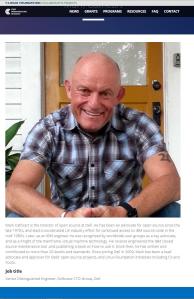Taking some time out of work in the technical, software, computer industry has been really helpful to give my brain time to sift through the required, the necessary, the nice, and the pointless things that I’ve been involved in over 41-years in technology.
![international-womens-day-logo1[1]](https://cathcam.files.wordpress.com/2016/03/international-womens-day-logo11.jpg?w=500) Given that today is International Women’s Day 2016 and numerous tweets have flown by celebrating women, and given the people I follow, many women in Technology. I thought I’d take a minute to note some of the great women in Tech I had the opportunity to work with.
Given that today is International Women’s Day 2016 and numerous tweets have flown by celebrating women, and given the people I follow, many women in Technology. I thought I’d take a minute to note some of the great women in Tech I had the opportunity to work with.
I was fortunate in that I spent much of my career at IBM. There is no doubt that IBM was a progressive employer on all fronts, women, minorities, the physically challenged, and that continues today with their unrelenting endorsement of the LGBT community. I never personally met or worked with current IBM CEO, Ginni Rometty, she like many that I did have the opportunity to work with, started out in Systems Engineering and moved into management. Those that I worked with included Barbara McDuffie, Leslie Wilkes, Linda Sanford and many others.
Among those in management at IBM that were most influential, Anona Amis at IBM UK. Anona was my manager in 1989-1990, at a time when I was frustrated and lacking direction after joining IBM two years earlier, with high hopes of doing important things. Anona, in the period of a year, taught me both how to value my contributions, but also how to make more valuable contributions. She was one of what I grew to learn, was the backbone of IBM, professional managers.
My four women of tech, may at sometime or other, have been managers. That though wasn’t why I was inspired by them.
Susan Malika: Sue, I met Sue initially through the CICS Product group, when we were first looking at ways to interface a web server to the CICS Transaction Monitor. Sue and the team already had a prototype connector implemented as a CGI. Over the coming years, I was influenced by Sue in a number of fields, especially in data interchange and her work on XML. Sue is still active in tech.
Peggy Zagelow: I’d always been pretty dismissive of databases, apart from a brief period with SQL/DS; I’d always managed fine without one. Early on in the days of evangelizing Java, I was routed to the IBM Santa Teresa lab, on an ad hoc query from Peggy about using Java as a procedures language for DB2. Her enthusiasm, and dogma about the structured, relational database; as well as her ability to code eloquently in Assembler was an inspiration. We later wrote a paper together, still available online[here]. Peggy is also still active in the tech sector at IBM.
Donna Dillenberger: Sometime in 1999, Donna and the then President of the IBM Academy of Technology, Ian Brackenbury, came to the IBM Bedfont office to discuss some ideas I had on making the Java Virtual Machine viable on large scale mainframe servers. Donna, translated a group of unconnected ideas and concepts I sketched out on a white board, into the “Scalable JVM”. The evolution of the JVM was a key stepping stone in the IBM evolution of Java. I’m pleased to see Donna was appointed an IBM Fellow in 2015. The paper on the JVM is here.(1).
Gerry Hackett: Finally, but most importantly, Geraldine aka Gerry Hackett. Gerry and I met when she was a first line development manager in the IBM Virtual Machine development laboratory in Endicott New York, sometime around 1985. While Gerry would normally fall in the category of management, she is most steadfastly still an amazing technologist. Some years later I had the [dubious] pleasure of “flipping slides” for her as Gerry presented IBM Strategy. Aside: “Todays generation will never understand the tension between a speaker and a slide turner.” Today, Gerry is a Vice President at Dell. She recruited me to work at Dell in 2009, and under her leadership the firmware and embedded management team have made steady progress, and implemented some great ideas. Gerry has been a longtime advocate for women in technology, a career mentor, and a fantastic roll model.
Importantly, what all these women demonstrated, by the “bucketload”, was quiet, technological confidence; the ability to see, deliver and celebrate great ideas and great people. They were quiet unlike their male peers, not in achievement, but in approach. This why we need more women in technology, not because they are women, but because technical companies, and their products will not be as good without them.
(1). Edited to link to correct Dillenberger et al paper.


 Colleague Randy Guck, who leads our open source Doradus project, recent gave an O’Reilly Webcast on the project and using Doradus to extend Cassandra for high performance analytics.
Colleague Randy Guck, who leads our open source Doradus project, recent gave an O’Reilly Webcast on the project and using Doradus to extend Cassandra for high performance analytics.





Recent Comments